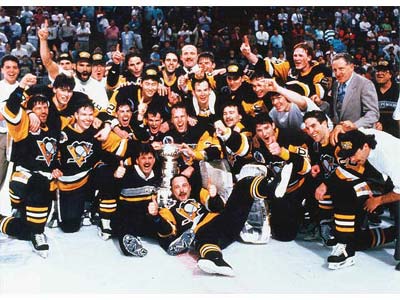If you had told any Angels fan three years ago that Garrett Richards would eventually put together a 200-inning, 3.65 ERA season in Anaheim, he or she would be beyond elated. Heading to 2014, the high hope for Richards was that he’d pitch well enough to stick in a big-league rotation for a full season. Fast forward two years, and the hope now is that he’ll “rebound” from the performance mentioned above. Expectations are weird, man.
Richards has been the Angels’ de facto ace for two seasons now, but 2016 will be his first real foray into the No. 1 spot in the rotation. What that signifies, beyond the rapid falls from grace of Jered Weaver and C.J. Wilson, is that expectations for Richards will remain high for the foreseeable future. So while a repeat of Richards’ 2015 season would be success for most—not to mention a huge win anyone else in the Angels rotation—it likely won’t be seen as such for the guy now leading a staff. That’s not to say Richards has to be that much better this season—expecting a repeat of 2014 is wishful thinking—but he does have to be better. If Richards can lead by example in 2016, the Angels should have a good chance at contention.
Position: SP | Age (2016): 28
Bats: R | Throws: R
Height: 6’3” | Weight: 210
2015 WAR: 1.8
2015 in a Tweet
Richards returned from major knee surgery to achieve several personal milestones—30 GS, 200 IP, 15 W—but showed only flashes of the ’14 ace.
2016 Projections
[table id=173 /]PECOTA and Steamer both seem to be in the “2014 Garrett Richards was an aberration, and everything else he’s done represents his true talent” camp. That’s no fun, but there’s logic to their reticence: Richards has just 169 innings of the ace-level performance, but 437⅓ innings of mediocre performance.
What PECOTA and Steamer don’t know is that Richards favored his surgically repaired knee for much of 2015, which caused him to lose faith in his devastating two-seamer and lose a tick of velocity on his fastball. Now that his knee is fully healed, Richards is not only working to regain confidence in his two-seamer, he’s also hit triple digits on the radar gun. Thus far, then, the pieces seem to be in place for his 2016 to more closely resemble his ZiPS projection. We’ll see.
*PECOTA uses DRA in lieu of FIP
Pitch Usage

As noted above, Richards went away from his two-seamer last season. The right-hander threw the pitch nearly a third of the time (28%) in his breakout 2014, but relied on it just 13 percent of the time in 2015. Richards’ spurning of the pitch isn’t the only thing that kept him from another Cy Young-worthy season, but it did likely play a considerable part—his 18.62 Whiff/Swing rate with the pitch was among the better marks in the league. If you’re hoping for a return to form in 2016, keep an eye on his two-seam usage.
One of the things Richards does very well is make all his harder offerings look the same as they approach the plate. Batters often struggle to recognize his slider (or four-seam) until it’s too late, leading to either a whiff or weak contact. When his two-seamer’s also in the mix—his only real offering with arm-side run—it becomes that much harder for batters to pick up what’s coming. The pitch is especially effective against left-handed batters, who gave Richards more trouble than usual in 2015.
Zone Profile
I’m having a hard time discerning if that big red chunk in the top left of the first chart is the ball slipping out of Richards’ hand—as it seems to do at an alarming rate—or an actual strategy against lefties. Whatever the case, left-handed hitters certainly aren’t squaring those pitches up. Really the only place they come remotely close to hitting Richards well is on low and away offerings, which makes no sense. Must just be a lot of defensive swings that end up squeaking past the third baseman.
Against righties Richards does well to stay low in the zone and away, mainly by burying his slider in the other batter’s box. Anything over the upper half of the plate tends to get hit with considerable authority.
Fun Fact
Richards posted a 6.21 ERA over 126 innings in his three years at Oklahoma University and still managed to be a first-round pick in 2009. That’s either some crazy good scouting or one hell of a job at development. Maybe both.
What to Watch For
When Richards first got the call to the majors in 2011, his walk rate hovered around four batters per nine—not great, not terrible. It stayed there in 2012, then suddenly dropped to a little better than league average (2.7 BB/9) in 2013 in 2014. Then last season he reverted back to his early days a bit, creeping over three per nine mark and ultimately leading the club in free passes allowed. Richards will keep at least 10 extra runners off the bases over a full season if he can get back under 3.0 BB/9 in 2016, which doesn’t sound like much but could make a significant impact on his workload—think, like, those frustrating two-out walks that always extend a half inning by 15 minutes. Getting rid of a few of those would be a huge plus.
A Bold Prediction
Richards won’t quite return to his elite 2014 level, but he will become just the third Angels pitcher this century to reach 20 wins. Unlike Bartolo Colon, Richards won’t be awarded the Cy Young for accomplishing the mostly meaningless feat.
__
More Previews: Yunel Escobar; Kole Calhoun; Mike Trout; Albert Pujols; C.J. Cron; Daniel Nava; Carlos Pérez; Johnny Giavotella; Geovany Soto; Andrelton Simmons; Cliff Pennington; Jered Weaver; Andrew Heaney
Add The Sports Daily to your Google News Feed!


